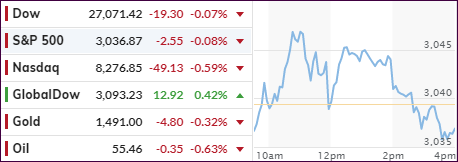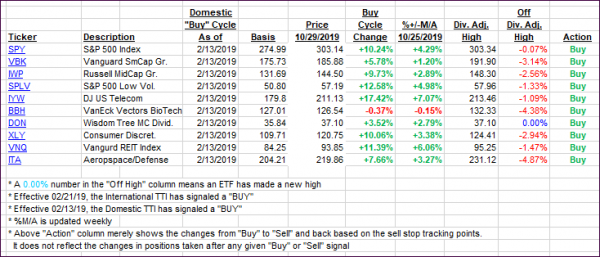
- Moving the markets
After an early bounce, the markets pulled back with the Nasdaq suffering the most after Google’s disappointing earnings, which followed a few days later after Amazon showed a quarterly report card that was not up to expectations. I was surprised to see this little of a fallout from these 2 behemoths, which usually impact market direction more severely.
It seems traders were more focused on the overall earnings picture, which continued its trend of better-than-feared results. Individual misses, even by large companies, were simply accepted as an outlier.
The US-China trade debacle was on the radar as well, but after yesterday’s positive noises, the “phase one” deal may not be ready for signing by the time Trump and Xi Jinping meet in Chile next month, according to a Reuters report. That does not surprise me, after all, the dangling trade carrot is merely being used to move markets in the desired direction and not to signal any agreement with substance.
The mixed picture on the economic front featured two events with opposite outcomes. First, we learned that Pending Home Sales surprised to the upside by scoring its biggest annual gain since 2015. This positive event, however, was upset by the fact that Consumer Confidence tumbled to a 7-month low to its lowest since March.
In the end, the major indexes meandered around their respective unchanged lines, as awareness struck traders that not only does tomorrow’s Fed announcement still carry an element of uncertainty, but also reminded them of what happened the last two times rates were lowered.
2. ETFs in the Spotlight
In case you missed the announcement and description of this section, you can read it here again.
It features 10 broadly diversified and sector ETFs from my HighVolume list as posted every Saturday. Furthermore, they are screened for the lowest MaxDD% number meaning they have been showing better resistance to temporary sell offs than all others over the past year.
The below table simply demonstrates the magnitude with which some of the ETFs are fluctuating regarding their positions above or below their respective individual trend lines (%+/-M/A). A break below, represented by a negative number, shows weakness, while a break above, represented by a positive percentage, shows strength.
For hundreds of ETF choices, be sure to reference Thursday’s StatSheet.
For this current domestic “Buy” cycle, here’s how some our candidates have fared:

Again, the %+/-M/A column above shows the position of the various ETFs in relation to their respective long-term trend lines, while the trailing sell stops are being tracked in the “Off High” column. The “Action” column will signal a “Sell” once the -8% point has been taken out in the “Off High” column. For more volatile sector ETFs, the trigger point is -10%.
3. Trend Tracking Indexes (TTIs)
Our Trend Tracking Indexes (TTIs) both gained a tad, despite overall market direction being slightly down.
Here’s how we closed 10/29/2019:
Domestic TTI: +4.51% above its M/A (prior close +4.32%)—Buy signal effective 02/13/2019
International TTI: +2.54% above its M/A (prior close +2.35%)—Buy signal effective 10/29/2019
Disclosure: I am obliged to inform you that I, as well as my advisory clients, own some of the ETFs listed in the above table. Furthermore, they do not represent a specific investment recommendation for you, they merely show which ETFs from the universe I track are falling within the specified guidelines.
Contact Ulli